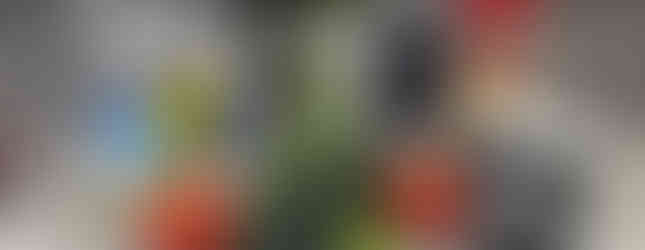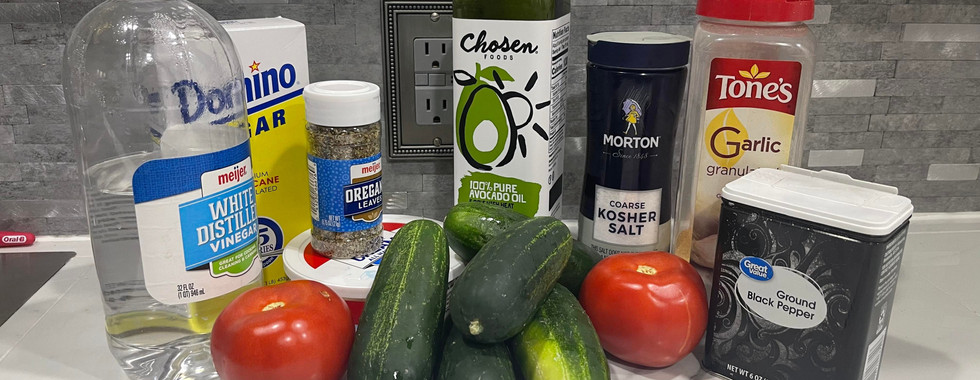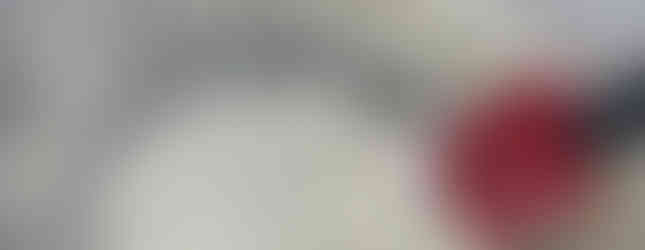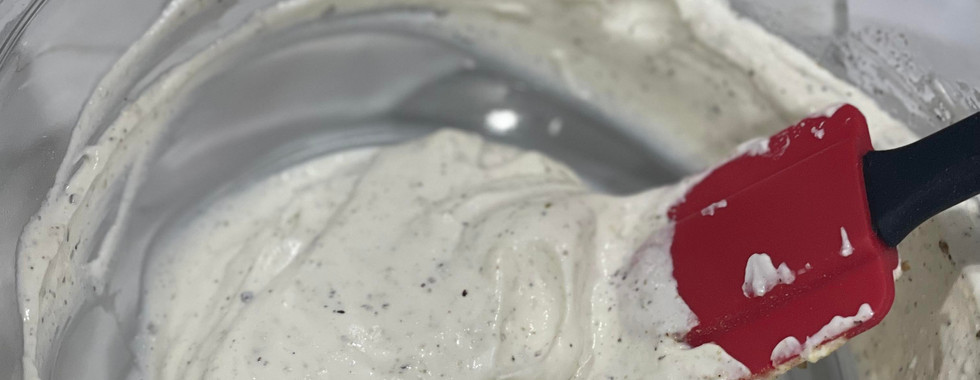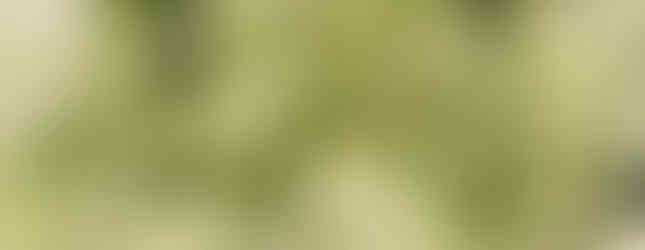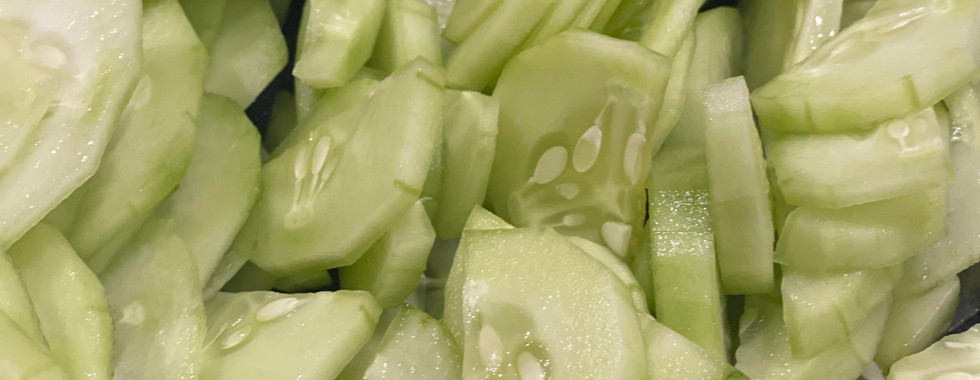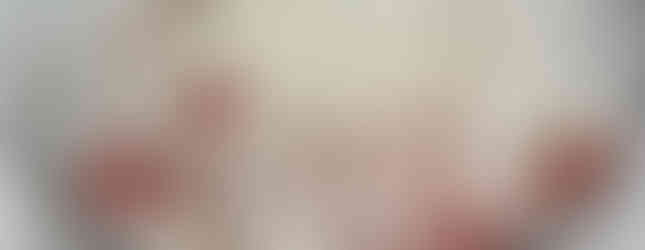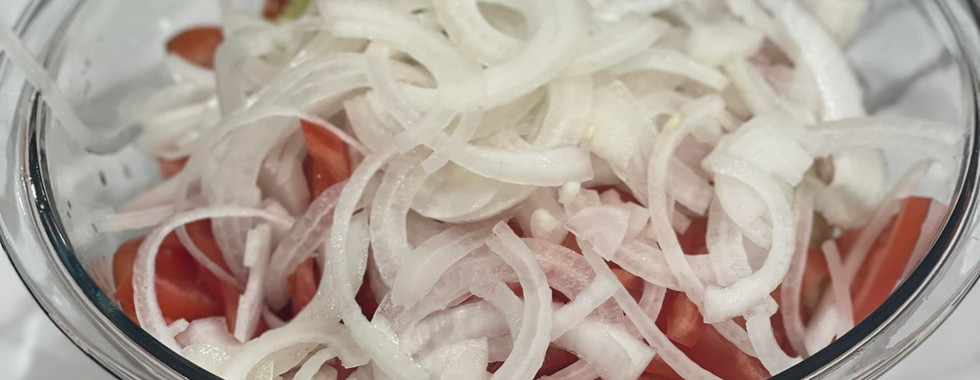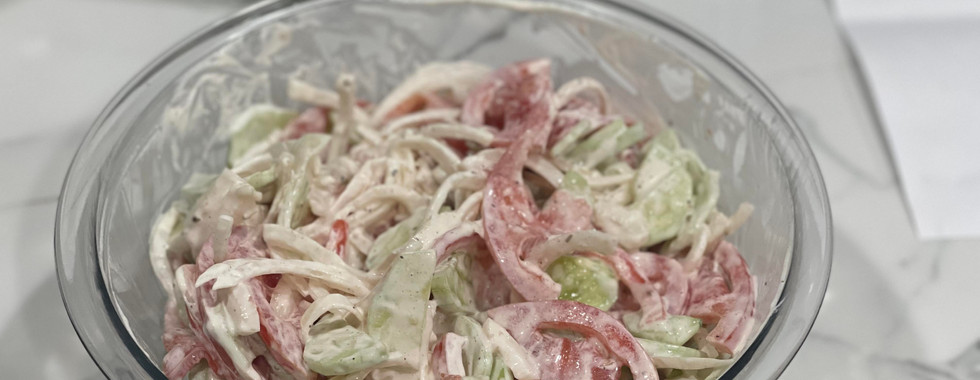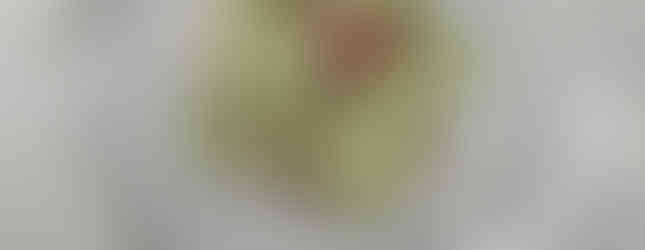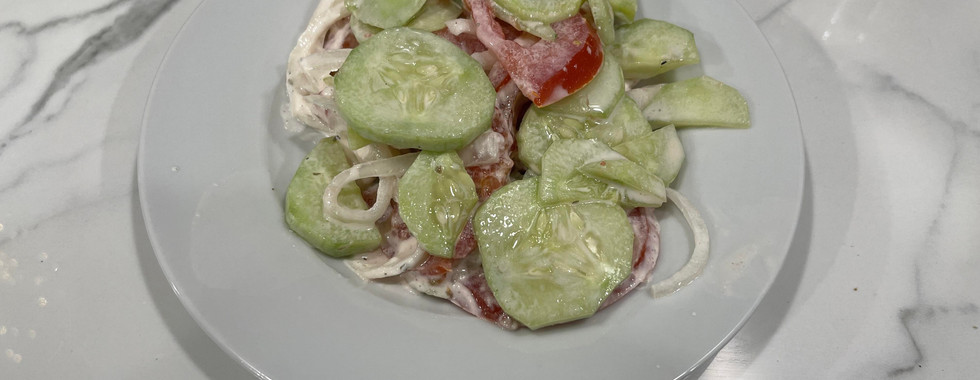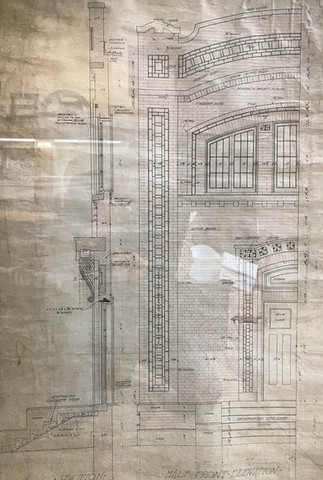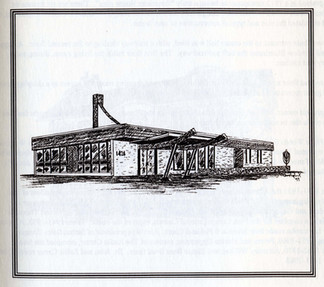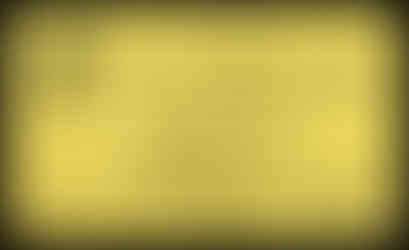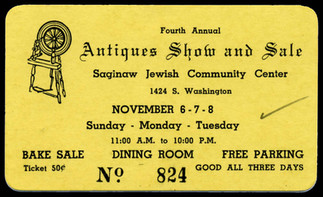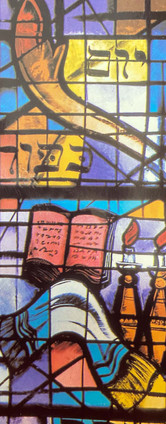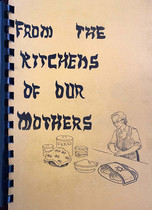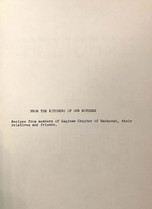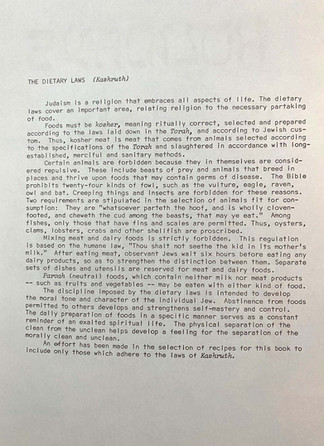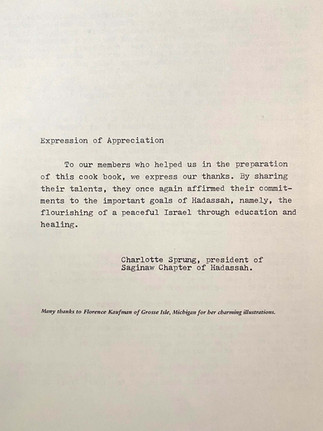"From the Kitchens of Our Mothers" , Temple B'nai Israel

RECIPE
2 cucumbers, pared and thinly sliced
2-3 tomatoes, thinly sliced
1 onion, thinly sliced
1 cup sour cream (optional)
oil
vinegar
water
sugar
garlic powder or crushed garlic clove
pepper
oregano
parsley
Make marinade from liquid ingredients and seasonings to taste. Cover vegetables and chill at least several hours. This may be used in combination or just use either vegetable. To make creamy marinated cucumbers, add sour cream to marinade.
Test Kitchen Notes: The marinade recipe was not particularly detailed with their measurements, so I eyeballed everything. I ended up using about a tablespoon of oil, vinegar, and the garlic powder. I used 1/2 tsp of sugar, but some might prefer more sweetness. I did not add any water to the marinade, plenty of liquid was generated during the chilling process. I also ran out of parsley and did not realize until it was too late, so no parsley was used for this version. I opted to use sour cream for the creamy version.
HISTORY
On November 3, 1976, the Township Times announced that the Temple B’nai Israel Sisterhood would be holding its 20th annual antique show on November 7 and 8 of that year. And the highlights of the sale would include “25 dealers showing and selling diversified antiques; a Kosher dining room; and a home baked goods sale.” The article concluded with a list of items available in the Temple Gift Shop and announced, “Also on sale is the cook book, “From the Kitchen of Our Mothers,” with recipes from members of the local Hadassah chapter.” This book is the source of this week’s recipe.
When Temple B’nai Israel was featured on the 1994 Cathedral District Tour of Historic Homes this history was included in the guidebook:
“Temple B’nai Israel was charted on September 27, 1890. The first synagogue constructed by the congregation was dedicated in 1913 and was located on Second Avenue. In 1952 a new Jewish community center was dedicated on the South Washington Avenue site [1424 South Washington Ave.]. This structure is incorporated in the current building. In 1964 a major addition, including a new sanctuary, was dedicated. Designed by the local architects Oeming and Waters, the building’s design was explained in a 1964 fact sheet as follows:
Reminders of their rich biblical heritage surround members of B’nai Israel when they gather for worship in the recently completed Temple. According to Rabbi Joseph Katz, the book of Exodus was used both as an inspiration and guide in the design of the building. . . . Architect, Oeming and Waters studied the ancient specifications, adapting them to construct a colorfully historical Temple incorporating modern materials and construction methods. Since the children of Israel were wandering in the desert at the time of Exodus, the ancient house of worship described was a tent. In the new Saginaw Temple, a tent-like feeling is expressed in the soaring beams and curving ceiling structure.
Visitors to the Temple enter under a canopy reminiscent of a tent flap held on wooden poles. The double doors are designed in the form of the tablets with the Hebrew letters for the Ten Commandments on them. These lead into a library lounge which is done in natural walnut with a bold color and tan-striped carpet inspired by the famous ‘coat of many color’ worn by Joseph…
Doors to the south of the library lounge lead into the synagogue. Walls of the sanctuary are paneled beige material which recalls the draped curtains of early Temples. As described in the Bible, the Ark (the sacred receptable containing the first five books of the Bible) is fitted with formed staved and is embellished with rings of gold and a symbolic crown…
One of the most memorable features of the interior is the magnificent series of stained-glass windows which were donated by Dr. and Mrs. David B. Ruskin in honor of their parents. Researched and designed by Dr. Ruskin, the windows were executed by the Parisian firm Jean Barillet.”
Since this description was written for the 1994 tour, much has changed. The congregation of Temple B’nai Israel merged with that of Beth El, also of Saginaw, in 2004. The 1964 building was sold and demolished (The windows were preserved.) In 2010, The Saginaw News reported that “The congregations of Bay City’s Temple Israel and Saginaw’s Congregation Beth El are merging as Temple Beth Israel, a move triggered by declining membership and resources.”
A 1990 history of Temple B’nai Israel, published in honor of the congregation’s centennial, frankly, discusses the challenges and future of the congregation and closes with:
“It is with fond nostalgia that I reflect upon our past but is with a firm resolve that I look forward to meeting the challenge regarding the community’s future.”
The Castle Museum’s collection includes one sheet of drawings of the façade of Temple B’nai Israel’s 1913 building. A ticket to the 1960 Antique show – it was held in the Jewish Community Center before the addition of the 1964 Temple. A drawing of the 1964 Temple and a photograph of detail of the windows; the cover and pages from “The Kitchens of Our Mothers.”

